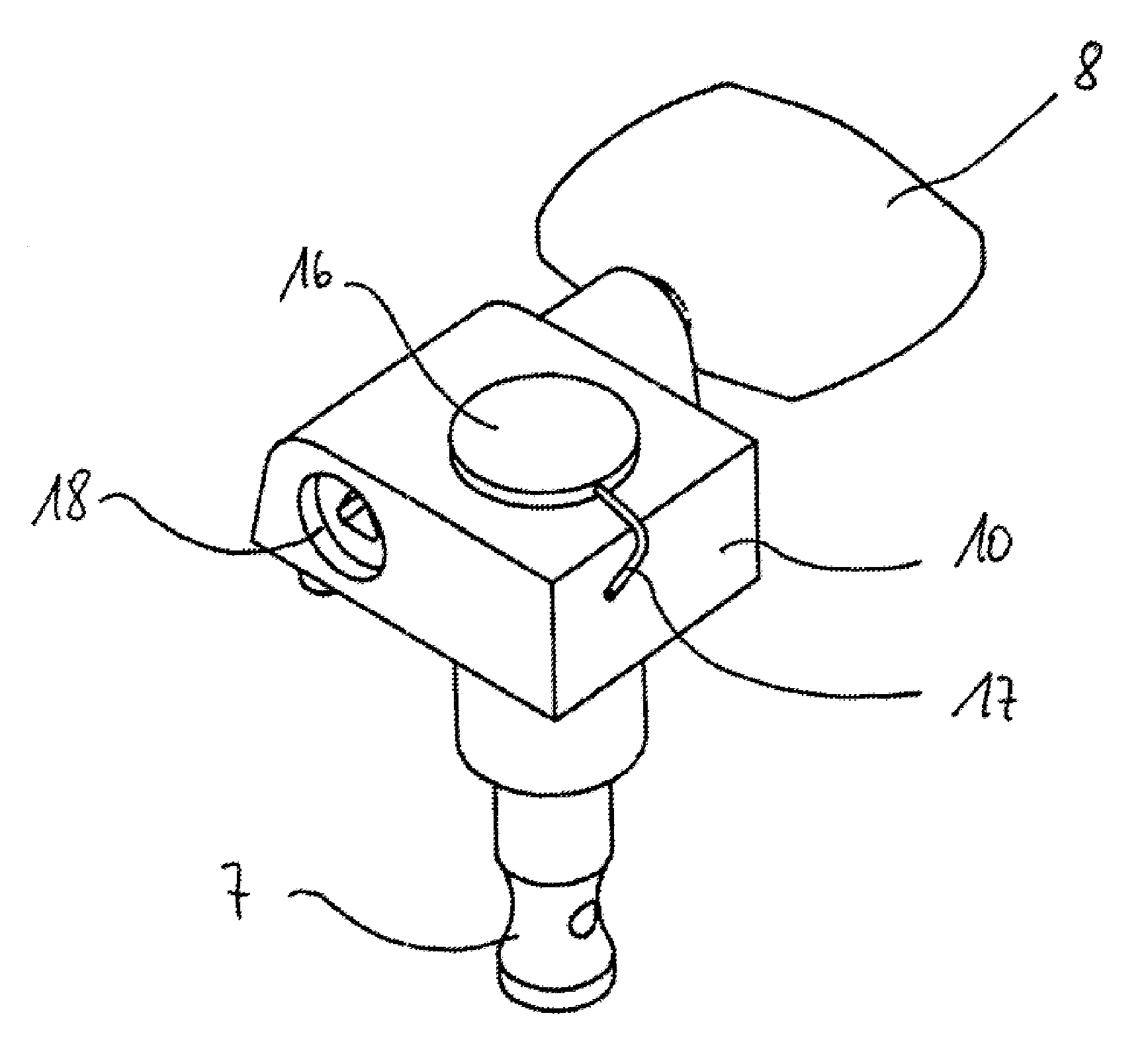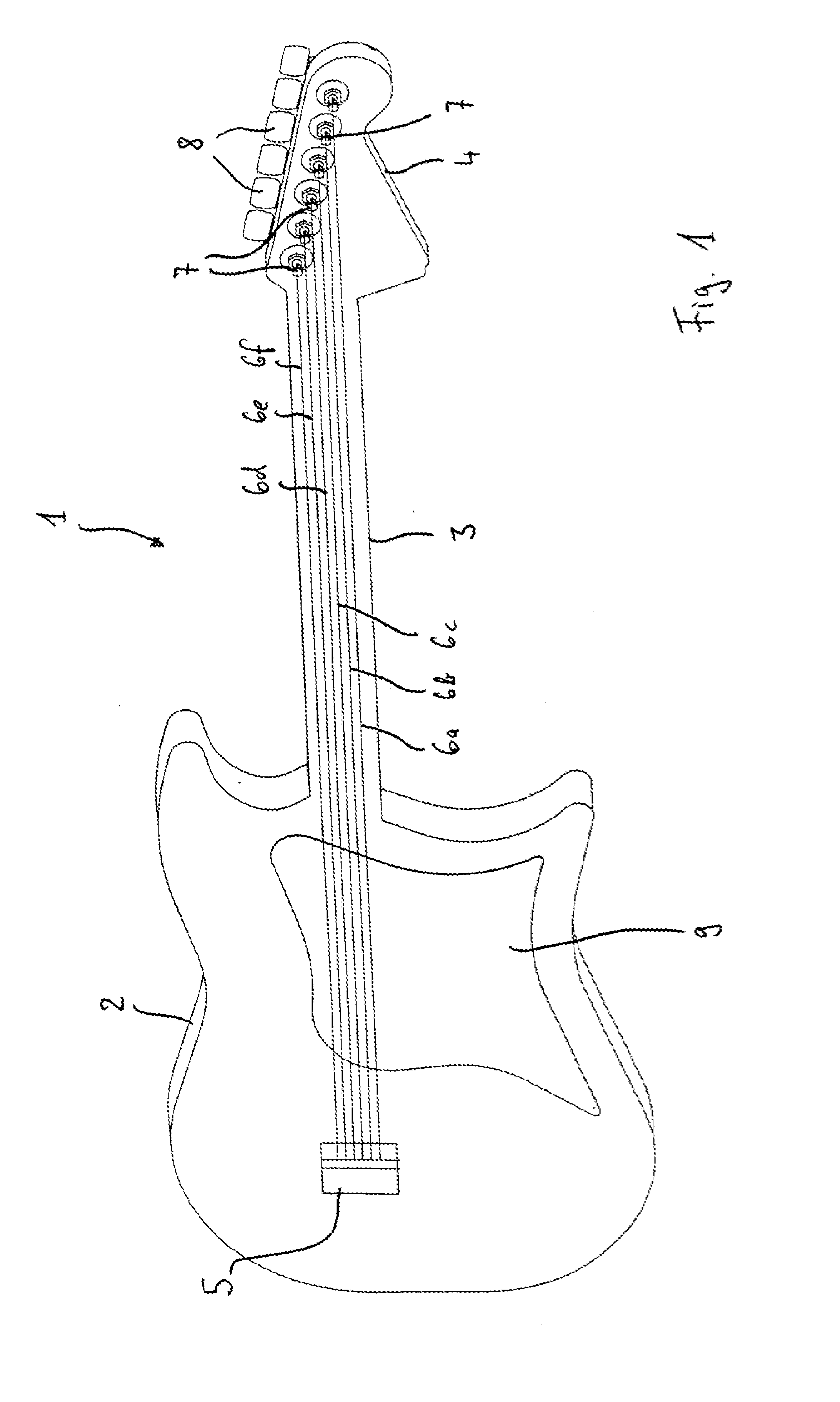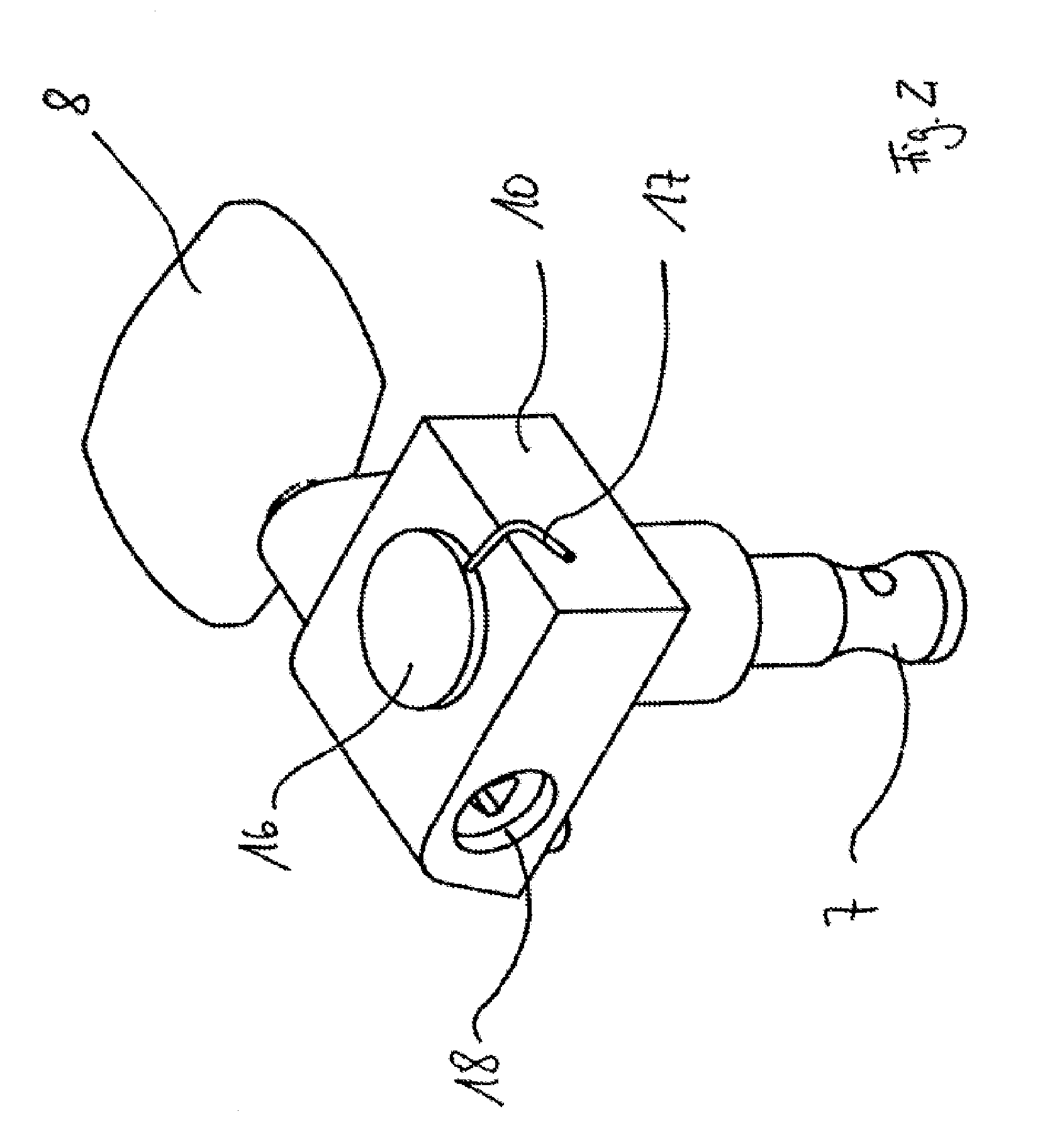Device for Automatically Tuning a String of a Stringed Instrument
- Summary
- Abstract
- Description
- Claims
- Application Information
AI Technical Summary
Benefits of technology
Problems solved by technology
Method used
Image
Examples
Embodiment Construction
[0029]FIG. 1 shows schematically an electric guitar 1 as an example of a string instrument on which the inventive device may be implemented. It can be subdivided approximately into a body 2, a neck 3 and a head 4. A mounting block 5, in this case a tremolo system block, is mounted on the body 2 with the six strings 6a through 6f of the guitar 1 being attached to this block with their first ends. The strings 6a through 6f extend from here along the body 2, the neck 3 to the head 4 where they are wound onto pegs 7 of the tuning mechanisms 10 arranged on the head 4 (see FIGS. 2, 3a, 3b, 4 and 5). To adjust the pegs 7, thumbscrews 8 are provided on the tuning mechanisms 10. A so-called pickguard 9 is provided on the body 2 of the electric guitar 1 beneath the strings 6a through 6f.
[0030]In this example, the adjusting mechanisms are formed by the tuning mechanisms 10.
[0031]FIGS. 2, 3a and 3b show how piezoelectric pickups 16 are arranged directly according to this invention on these adj...
PUM
 Login to View More
Login to View More Abstract
Description
Claims
Application Information
 Login to View More
Login to View More - R&D
- Intellectual Property
- Life Sciences
- Materials
- Tech Scout
- Unparalleled Data Quality
- Higher Quality Content
- 60% Fewer Hallucinations
Browse by: Latest US Patents, China's latest patents, Technical Efficacy Thesaurus, Application Domain, Technology Topic, Popular Technical Reports.
© 2025 PatSnap. All rights reserved.Legal|Privacy policy|Modern Slavery Act Transparency Statement|Sitemap|About US| Contact US: help@patsnap.com



